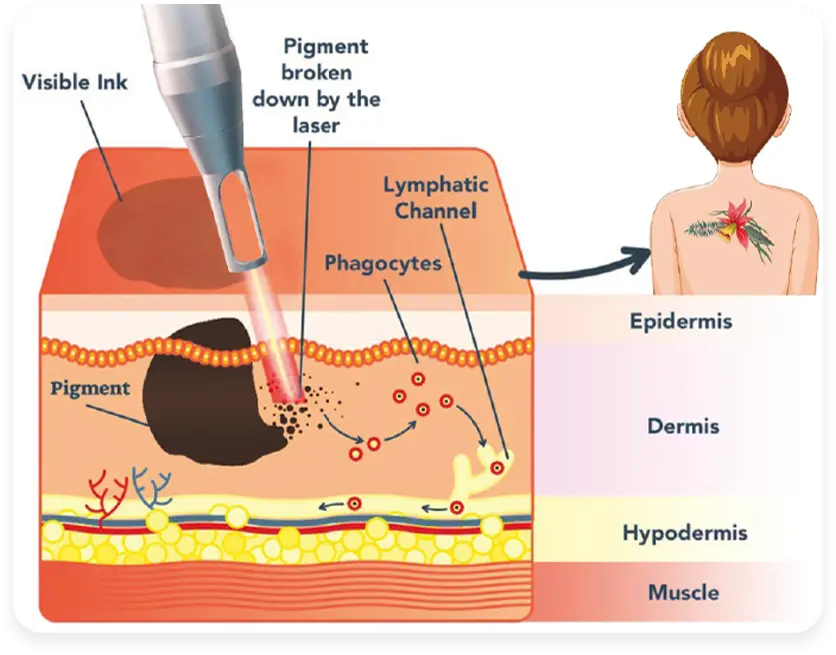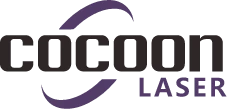Can Laser Treatment Remove Pigmentation? A Complete Expert Guide 2026
Can laser treatment remove pigmentation? Learn how laser targets sun spots, freckles and PIH, what results to expect, how many sessions you need, and treatment safety tips.
Uneven skin tone, sun spots and stubborn melasma are some of the most common reasons patients walk into a clinic – and “Can laser treatment really remove pigmentation?” is usually the very first question they ask. As a manufacturer of professional pigmentation lasers, we see this question from both sides: clinics want reliable technology, and patients want clear, honest expectations.
This guide pulls the two together. It explains what laser pigmentation treatment can realistically do, where its limits are, and how different laser technologies (including picosecond and 1550/1927 nm thulium systems like our LAV Dual platform) fit into a safe treatment plan. For a step-by-step breakdown of how pigmentation lasers work and what results to expect session by session, you can also read our main guide “Laser Pigmentation Removal: How It Works and What Results to Expect” on the CocoonLaser blog and use this article as a deeper companion piece.

1. What Kind of Pigmentation Can Laser Actually Treat?
“Pigmentation” is a broad term. Laser is not a magic eraser for every brown patch, but it is a powerful tool for specific types of excess melanin.
Common pigment problems that usually respond well to laser:
- Sun spots / age spots (solar lentigines) – Flat brown spots on face, hands and chest from chronic UV exposure. These are among the most predictable indications for pigment lasers and fractional thulium lasers.
- Freckles – Multiple small brown macules that often lighten impressively after picosecond or Q-switched treatment, especially on lighter skin types.
- Post-inflammatory hyperpigmentation (PIH) – Dark marks left by acne, eczema or minor trauma. Superficial PIH often responds well to fractional non-ablative lasers such as 1927 nm thulium, combined with strict sun protection and topical care.
- Some melasma cases – In selected patients, low-energy protocols with picosecond or 1927 nm thulium lasers can soften melasma, but recurrence risk remains and treatment must be gentle and conservative.
Conditions where laser is more limited or needs extreme caution:
- Deep dermal pigmentation or mixed-type melasma
- Pigment in very dark skin types (Fitzpatrick V–VI), where the risk of rebound hyperpigmentation is higher
- Pigmentation driven by active hormones (e.g. pregnancy, uncontrolled endocrine issues)
- Genetic pigmentary disorders that are not primarily melanin-based
In these situations, laser may still play a role, but usually as part of a broader plan that includes prescription topicals, sun control and sometimes oral medications rather than a stand-alone “fix”.

2. How Does Laser Pigmentation Treatment Work?
All effective pigment lasers are built on the same basic principle: selective photothermolysis. Melanin absorbs certain wavelengths of light more strongly than the surrounding skin. When laser light at those wavelengths is delivered in very short pulses, the pigment heats and fragments while the surrounding tissue is relatively spared.
There are three main ways professional lasers target pigment:
- Q-switched and picosecond “pigment” lasers
- Use extremely short pulses (nanoseconds or picoseconds) with high peak power.
- The energy causes a photo-acoustic “shattering” effect in the pigment granules.
- Best for discrete lesions like freckles, sun spots and tattoos, and for some types of dermal pigmentation when parameters are carefully controlled.
- Fractional non-ablative lasers (e.g. 1550 nm & 1927 nm thulium)
- Deliver thousands of microscopic thermal zones into the upper and mid-dermis.
- The 1927 nm wavelength has a strong affinity for water in the superficial dermis and epidermis, making it ideal for mottled sun damage, superficial hyperpigmentation and photo-aging changes.
- The 1550 nm wavelength reaches deeper to address texture, early scarring and collagen remodelling.
- Because only a fraction of the skin surface is treated in each pass, healing is relatively quick.
- Ablative fractional CO₂ lasers
- Physically vaporise columns of tissue and are powerful tools for deep acne scarring and severe photodamage.
- They can improve blotchy pigmentation but require longer downtime and careful patient selection, especially in darker skin tones.
Our pillar article “Laser Pigmentation Removal: How It Works and What Results to Expect” goes into the physics of these technologies in more detail and walks through the typical healing timeline after treatment. This current guide focuses on the bigger question: what results can patients realistically hope for?
3. Can Laser Remove Pigmentation Permanently?
The honest answer is: sometimes yes, sometimes no – and it depends heavily on the type of pigmentation and the patient’s behaviour after treatment.
3.1 When results can be long-lasting
- Isolated sun spots and freckles:
Once excess melanin clusters are broken down and cleared by the body, those exact spots often do not return if the patient maintains strict UV protection. New spots can appear, but they are usually different lesions caused by fresh sun damage. - Post-inflammatory hyperpigmentation:
When the original trigger (acne, irritation, friction) is controlled and the skin barrier is protected, PIH removed by gentle laser treatment often fades and stays improved. - Photo-aging related mottling:
Fractional thulium lasers can significantly lighten diffuse sun damage. Again, lasting results depend on daily SPF and lifestyle.
3.2 When recurrence is common
- Melasma:
Melasma is driven by a mix of melanocytes, hormones, vascular changes and chronic inflammation. Lasers can temporarily lighten it, but recurrence is very frequent, especially if there is strong sun exposure or hormonal triggers are ongoing. For this reason, many dermatologists now treat melasma with low-energy laser protocols or combine lasers with topicals rather than using aggressive settings. - Pigmentation in darker skin without strict aftercare:
In Fitzpatrick IV–VI, any heat or inflammation from laser can paradoxically create new PIH if energy is too high or aftercare is poor. That’s why many clinics prefer longer wavelengths and non-ablative or fractional modalities for these patients.
Key message for your clinic customers:
Laser can remove certain pigment lesions almost completely, but for most chronic pigment disorders, it is more accurate to talk about long-term control and significant lightening, not a once-for-all cure.
4. How Many Sessions Are Usually Needed?
Session count varies with pigment type, laser modality and skin type, but clinics can use these general ranges when counselling patients:
- Sun spots / freckles: 1–3 sessions with a picosecond or Q-switched laser, spaced 4–6 weeks apart, are often enough for visible clearing in lighter skin types.
- Diffuse sun damage & photo-aging: 2–4 sessions of fractional 1927 nm thulium at monthly intervals are commonly used for mottled pigmentation and texture.
- Melasma or mixed hyperpigmentation: 3–6 sessions or more of low-energy thulium or picosecond laser, combined with topical bleaching agents and strict sun avoidance, are typical.
- PIH and acne-related marks: 2–4 sessions of gentle fractional or pigment lasers, often alongside ongoing acne management.
Your pillar article can host a more detailed “session-by-session” chart; this cluster article can then link back to it for readers who want a deeper dive into the treatment timeline.
5. Is Laser Pigmentation Treatment Safe – Especially for Darker Skin?
Safety depends on three things: device quality, parameter selection and patient selection.
5.1 Device & wavelength choice
- Lighter skin (Fitzpatrick I–III):
A broad range of pigment and fractional lasers can be used, including picosecond, Q-switched and fractional thulium or CO₂, provided parameters are appropriate. - Medium to darker skin (Fitzpatrick IV–VI):
Clinics generally favour longer wavelengths and non-ablative or fractional options to minimise epidermal melanin absorption. Picosecond 1064 nm and fractional 1927 nm (with conservative energy and density) are commonly chosen. Shorter wavelengths like 532 nm or aggressive ablative CO₂ require great caution or are avoided entirely.
5.2 Risk factors for complications
Laser-related PIH, textural change or scarring are more likely when:
- The patient has a history of keloids or strong PIH
- Energy, density or stacking are too aggressive for the skin type
- There is active inflammation (e.g. uncontrolled acne, dermatitis)
- Sun exposure occurs in the healing window
- Inappropriate home care or irritant products are used
Because of these variables, every pigmentation laser should be marketed to clinics with clear parameter guidelines for different Fitzpatrick types, conservative “test spot” recommendations and strong post-treatment instructions.
6. What Happens During and After a Typical Session?
While protocols differ between devices and clinics, a standard patient journey looks like this:
Before treatment
- Consultation, diagnosis of pigment type and skin classification
- Review of medical history, medications and pregnancy status
- Pre-treatment photos and consent
- Sometimes preconditioning with brightening topicals or SPF
During treatment
- Skin cleansing and eye protection
- Numbing cream for fractional or higher-energy procedures, if needed
- Laser passes tuned to lesion depth and skin type
- Cooling and soothing products applied immediately after
Downtime and healing
- Pigment lasers (picosecond / Q-switched):
Mild redness, darkening or “peppering” of spots for several days before they flake or fade. - Fractional 1927/1550 thulium:
Pinkness and a sandpaper texture or micro-dots for 3–7 days, then gradual brightening over 2–4 weeks as pigment-laden cells shed. - Ablative CO₂:
More obvious crusting and oozing in the first week, followed by prolonged pinkness; usually chosen only when patients accept this downtime.
Careful plus consistent aftercare – high-SPF sunscreen, bland moisturiser, no picking or scrubbing – is just as important as what happens in the treatment room.
7. Matching the Laser to the Pigment: Practical Examples
Clinics often find it useful to think in terms of “pigment pattern + skin type + lifestyle” when selecting a device or mode:
- A fair-skinned outdoor worker with scattered sun spots may be best served by a picosecond pigment laser for fast clearance and a maintenance plan.
- A patient with mottled sun damage, enlarged pores and fine wrinkles can benefit from a dual-wavelength fractional system combining 1550 nm (for texture and collagen) with 1927 nm (for superficial pigmentation), such as our LAV Dual platform.
- A patient with chronic melasma and sensitive, medium-toned skin might do better with a course of low-energy fractional thulium or 1064 nm picosecond treatments, integrated with topical therapy and rigorous SPF, rather than aggressive single-session “high-power” attempts.
You have already started building this decision logic in your matrix blog “Thulium Laser vs Picosecond Laser: Which Targets Pigment More Safely?” – this new article can link to that comparison for readers who want to understand why different technologies are chosen.
8. When Is Laser Not the Right Answer?
For strong long-term results and fewer dissatisfied patients, it is just as important to recognise the limitations of laser:
- Uncontrolled hormones, pregnancy or photosensitising medications: delay or choose non-laser options.
- Active infection, open wounds or severe dermatitis: treat the underlying condition first.
- Unrealistic expectations (“I want my pigment gone forever in one session”): laser may improve, not erase; combination therapy and maintenance are key.
- Patients unable or unwilling to use sunscreen daily: relapse risk is extremely high.
In these scenarios, topical regimes, chemical peels, vascular lasers or even lifestyle counselling may need to take priority over energy-based devices.
9. Key Takeaways for Clinics and Patients
So, can laser treatment remove pigmentation? The most accurate, expert answer is:
- Yes – for many types of sun-induced and post-inflammatory pigmentation, laser can achieve very significant and sometimes near-complete clearance, especially when combined with sun protection and skincare.
- For chronic conditions like melasma, laser is best viewed as a powerful tool for controlled lightening rather than a permanent cure.
- Long-term results depend on correct device choice, conservative parameters for darker skin, and meticulous aftercare.
As a manufacturer, our role is to give clinicians not only reliable devices, but also the knowledge to select the right wavelength, pulse structure and protocol for each pigment pattern. When technology and clinical judgement work together, laser becomes one of the most effective tools available for restoring a clearer, more even complexion.
If you need more information, please click “Contact Us”.
If you want to obtain more information, please follow our official website and Facebook.









